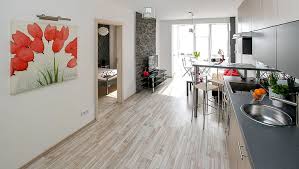Interior painting is one of the most effective ways to revitalize your living space. Whether you’re looking to refresh a tired room or completely transform the ambiance of your home, painting offers endless possibilities. From selecting the right colors to understanding different paint finishes, let’s explore how interior painting can elevate your home.
Choosing the Right Colors: The first step in any interior painting project is choosing the right colors. Consider the mood you want to create in each room. Soft pastels like light blues and greens can create a calming atmosphere, perfect for bedrooms or relaxation areas. Bold colors like deep reds or vibrant yellows can add a sense of energy and personality to living spaces or dining rooms. Don’t be afraid to mix and match colors to reflect your unique style.
Preparation and Planning: Before diving into painting, proper preparation is key. Clear the room of furniture and cover floors and fixtures with drop cloths to protect them from paint splatters. Repair any cracks or holes in the walls and sand rough surfaces for a smooth finish. Prime the walls if necessary, especially when transitioning between dark and light colors or covering stains.
Painting Techniques: When it comes to painting techniques, start with cutting in the edges using a high-quality angled brush for precision along corners, ceilings, and trim. Use a roller for larger areas, applying paint in smooth, even strokes for a professional finish. Consider using a paint sprayer for larger rooms or textured surfaces for a faster and more consistent application.
Choosing the Right Finish: The finish of your paint can significantly impact the final look of the room. Matte or flat finishes are ideal for ceilings and walls with imperfections, as they hide flaws and provide a soft, velvety appearance. Satin and eggshell finishes are versatile options for most living spaces, offering a subtle sheen that’s easy to clean. Semi-gloss and gloss finishes are perfect for high-traffic areas like kitchens and bathrooms, as they are durable and resistant to moisture.
Final Touches: Once the paint has dried completely, remove any tape and touch up any missed spots or uneven edges. Reinstall fixtures and furniture, and enjoy your newly transformed space. Consider adding decorative elements like artwork, accent walls, or statement furniture pieces to complement your freshly painted walls and create a cohesive look.
Conclusion: Interior painting is a powerful tool for reinventing your home’s interior. With careful color selection, proper preparation, and expert application techniques, you can achieve stunning results that reflect your personal style and enhance your living experience. Transform your space with the transformative magic of interior painting.
